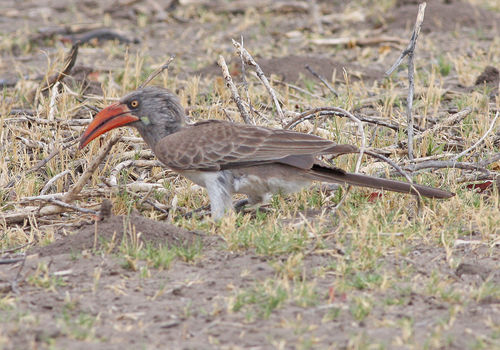
Bradfields hornbill
Tockus bradfieldiBradfields hornbill
Introduction: Bradfield's hornbill (Tockus bradfieldi) was named after RD Bradfield (1882-1949). He collected the first specimen near his farm Quickborn at Waterberg Plateau near Otjiwarongo. Habitat ranges of tall, broad-leafed woodlands on sandy soils and mopane woodland onto palm floodplains and into riverine forests are also included in the range. In the dry season they are attracted to leaf-litters near water holes..
Distribution: North-eastern and extreme north-western regions of the country. Isolated population in Epupa Falls. Rundu, Etosha National Park, Caprivi, Mudumu National Park, Nkasa Rupara National Park and Victoria Falls.
Diet: Mainly invertebrates such as locusts, mantids, cicadas, dragonflies, bugs, maggots, beetles and millipedes.
Description: Medium-sized hornbills with loud, high-pitched whistling calls that can be heard as they fly from tree to tree in the summer in search of food.
Breeding: Usually between 3 and 7 eggs are laid between November and February with an incubation period of at least 28 days.
Size: 50 to 57cm.
Weight: 285g.
Klein Windhoek

